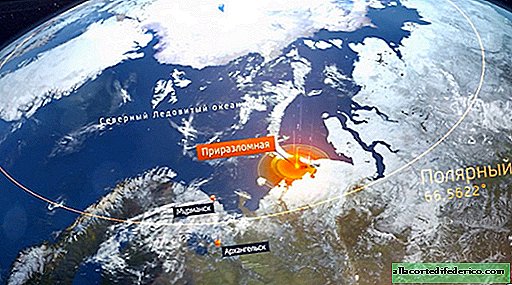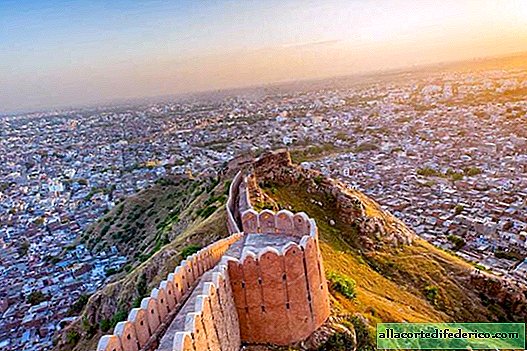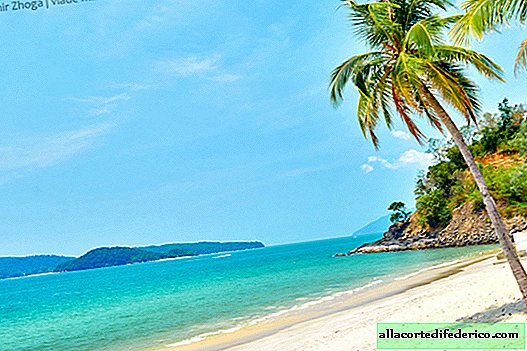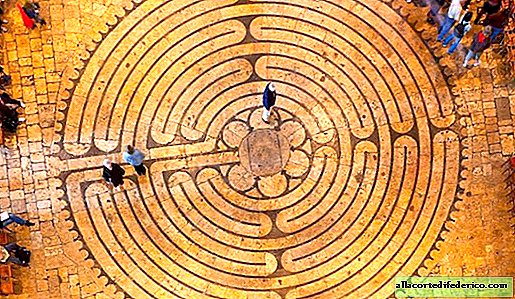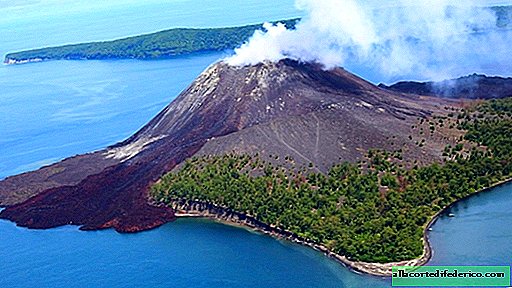Sailor Gannon from Carthage: the famous voyage of which little is known
Travel Details
Gannon's story about his journey has survived to the present day thanks to a single medieval manuscript. And that, in turn, is itself a copy from the Greek translation of the Carthaginian story on a stele of 400 BC. The manuscript called "Peripl" (Coast) is short, and at least two fragments from the original story have not reached us. But these are the features of all preserved ancient manuscripts. And the value of Gannon's story goes beyond a simple description of a sea voyage.
Gannon and his journey
Gannon in the Greek text is called "Magistrate" - this is the highest administrative position in the Carthaginian government. In addition, he is mentioned among the powerful Carthaginian clan of the Magonids, so, apparently, he belonged to the social and political elite of Carthage. That's all the information that is available about the famous traveler. A certain Gannon was mentioned by a Roman historian in connection with the battle between the Carthaginians and the Moorish aborigines in the 5th century. BC. Given that the Hannon expedition at this time founded colonies in the area (Morocco), it is likely that this is the same Gannon.
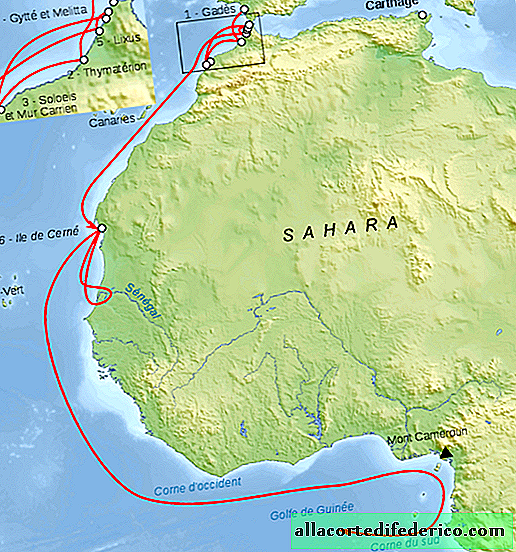 Estimated Route
Estimated RouteWhen exactly the journey took place is also unknown. Probably the expedition set off at the very end of the 6th century. BC. and certainly no later than 425 BC The Carthaginian ships were made of wood and had one sail, as well as the ability to row with oars if necessary. They did not have a compass and relied on stars, especially Ursa Minor, for navigation.
In the Greek text, there are some inaccuracies in names and geographic locations. Some historians believe that they are made on purpose: they tried not to give any information to competitors. Interestingly, the final part of Gannon's story is lost. Because of this, there is much debate about how far Gannon swam with his expedition. Some believe that he had every chance to reach the far south, Cameroon, Gabon. Others are sure that they were no further than Sierra Leone. However, even the closest trip is more than 5,000 kilometers, or 3,000 miles, which is even a lot by today's standards.
The fact that the Carthaginians sailed along the west coast of Africa is confirmed by Herodotus. And also by the fact that the large fleet of Gannon would not be sent to found colonies in places unknown to them. So it can be argued that this trip was clearly not the first.
 Carthaginian ship, reconstruction
Carthaginian ship, reconstructionSoon after Hannon was followed by other Carthaginian travelers who were looking for gold, which Herodotus describes. Another famous traveler Polybius followed Hannon and sailed along the same coastline of the Atlantic Ocean in the 2nd century BC. For some reason, however, significant further exploration of the African coast and inland took place much later.





